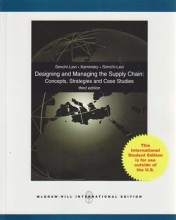Attention - Depth and Size Perception
30 important questions on Attention - Depth and Size Perception
What is the relationship between Depth & Size
How big an object appears can affect how far away it appears
How far away an object appears can affect how big it appears
What happens when you perceive an object as closer than it actually is?
What are the 2 main oculomotor cues?
- Higher grades + faster learning
- Never study anything twice
- 100% sure, 100% understanding
What is binocular convergence?
The degree of convergence gives you an indication of how close an object is.
What are monocular cues?
What are the 3 main monocular cues?
What are the Pictorial Cues? (7 Main Pictorial Cues)
A - Atmospheric Perspective
T - Texture Gradient
P - Perspective Convergence
R - Relative Height
O - Occlusion
S - Shadows
How does this picture explain F in FATPROS?
- You know how tall/big a car roughly is
- Thus, by its size, you can estimate how far an object is
How does this picture explain A in FATPROS?
- There is fog in the photo – It is hard to see objects
- By estimating how hard it is to see an object, you can estimate how far an object is
How does this picture explain T in FATPROS?
- As the texture becomes more high frequency (smoother), the grass appears to be further away
How does this picture explain P in FATPROS?
- The road markers don’t appear to be parallel; They appear to be converging
- By estimating the degree of convergence, you can estimate how far an object is
How does this picture explain O in FATPROS?
- The car is occluded by the truck
- Objects that are occluded by another object are further away
How does this picture explain S in FATPROS?
- You can use the distance of the shadow from the object to give an estimation of how far the object is above the background
What are the Movement-Based Cues?
- Motion Parallax
- Deletion and accretion
What is Motion Parallax?
What is Deletion and Accretion? Use a train example
When the train is moving, some objects will occlude another object
When a object is hidden from another object, it is known as deletion
When that object re-appears again, it is known as accretion
By looking at deletions and accretions, we can understand the occlusion relationship and tell which objects are further away
Whichever object is fixated on has ________ absolute disparity
What is a horopter?
How is the correspondence problem solved?
What are the 2 factors that determines the perceived size of an object?
What is angular size? What is the relationship between distance and angular size?
What is size constancy?
- Size Constancy is the phenomenon where an object's apparent size does not depend on it’s physical distance
- When an object is far away, it appears to be the same size as when it is closer, even though its visual angle is much larger in the latter case
How does an observer achieve size constancy?
Formula of size constancy
What are size illusions caused by?
What did Holway and Boring investigate?
When is it easier to determine the distance of the object?
Explain Holway and Boring's experiment
- Observer sat at an intersection of two corridors and could view a test circle in one corridor and comparison circle in the other corridor.
- Their task was to adjust the size of the comparison circle to match the size of the test circle.
- The test circles were of different sizes but were presented at different distances so that their angular size was always the same.
What did the observers in Holway and Boring's experiment use to determine the depth of the test patch? (4 separate groups of participants)
In condition 1 - binocular disparity, motion parallax and shadows
In condition 2 - observers viewed the test circle with 1 eye to remove binocular disparity cues (leaving only motion parallax and shadows)
In condition 3 - observers viewed the test circle through a peephole with 1 eye to remove motion parallax cues (leaving only shadows)
In condition 4 - Nothing; observers viewed the test circle through a peephole with 1 eye + drapes were used to remove the shadows
When can objects be accurately estimated?
The question on the page originate from the summary of the following study material:
- A unique study and practice tool
- Never study anything twice again
- Get the grades you hope for
- 100% sure, 100% understanding
































